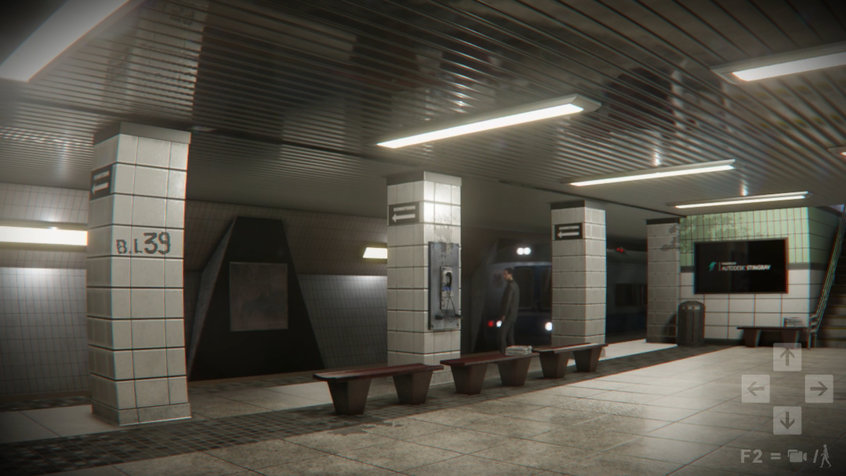The ability of computers to create digital environments that humans can walk through has moved closer with the combination of the omnidirectional treadmill and the virtual reality headset. Together, they allow architects, engineers and building owners to experience a building or an urban area before either exist.
We see huge potential for virtual reality technology to help solve the UK’s transport problems at a lower cost and without the associated risks of testing new technology in a live environment– Graham Fletcher, TSC
The UK’s first example of the system opened last month at the Milton Keynes headquarters of the Transport Systems Catapult (TSC), one of a number of government-sponsored groups set up to accelerate technology in strategic areas of the economy.
The TSC’s “visualisation laboratory” combines a 6-metre-wide omnidirectional treadmill made by Swedish company Omnifinity – originally developed to train soldiers for battle – with an advanced headset, the Oculus Rift DK2.
Together they let the viewer walk through virtual landscapes on the scale of an entire city, which TSC says allows the kind of research that so far has required the construction of test towns.
“We see huge potential for virtual reality technology to help solve the UK’s transport problems at a lower cost and without the associated risks of testing new technology in a live environment,” said Graham Fletcher, modelling and visualisation director at TSC.

A still from Autodesk’s Stingray 3D game engine (Autodesk)
One possible use is testing driverless cars. Subjects could walk around interacting with autonomous vehicles being controlled by algorithms.
“We have already had interest from major manufacturers in testing their vehicles in this way before implementation on UK roads,” Fletcher said.
Other expected applications for the Omnideck include:
- Sign off for civil engineering projects and architectural designs, both internal and external;
- Helping decision makers understand the scale and context of an engineered design, and issues that are not obvious on paper or on screen;
- Training in high risk environments such as railway maintenance.
Gaming meets architecture
Meanwhile, the makers of design software have begun to produce products for the virtual reality and augmented reality markets.
Autodesk launched the Stingray engine at the Game Developers’ Conference in Cologne, Germany on 3 August.
This is initially aimed at 3D games uploaded to VR headsets such as Oculus Rift, but Chris Bradshaw, Autodesk’s senior vice president for media and entertainment, said it could also be used for architecture.
Comments
Comments are closed.







Brilliant for architects, to test if buildings are human compatible! So many houses are designed by cost or necessity and nd really for living in, They need to test for sun direction effects , temperature gradients, wellness and wellbeing with buildings with no outdoor space and often limited sunlight and often dirt air from industry and traffic nearby.
Why do nearly all architects live in areas with trees, rivers and varying terrain , simple, It’s nice there, so what can they design for all of us that achieves the same desire that they want and have for themselves?